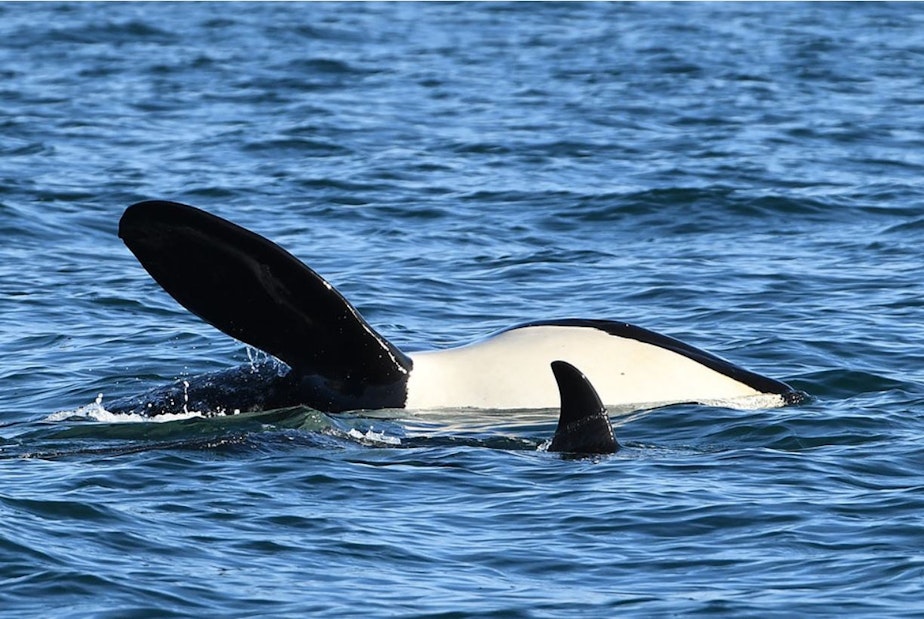Another 'peanut head' as endangered orca loses fat around blowhole

Researchers out on the waters west of San Juan Island on New Year’s Eve saw something they didn’t want to see: another orca severely underweight and wasting away.
Whale researchers encountered the southern resident orcas' J-pod as they swam in Haro Strait, just over the Canadian border from San Juan Island.
Jane Cogan, a retired Boeing engineer who volunteers with the Center for Whale Research on San Juan Island, was on board the 33-foot Morning Star as researchers observed and photographed the emaciated J17, a 42-year-old orca matriarch.
"What we could tell from the boat and photos taken from the boat is that J17's head shape is what they call a peanut head," she said. "It's not a good sign when the whales start to lose the fat in and around their heads, behind their blow holes."
A dearth of chinook salmon, the resident whales’ main prey, has left many orcas struggling to feed themselves.
Metabolizing their own blubber for energy also releases toxic industrial chemicals, including PCBs, that have built up in their fat reserves.
J17 is a grandmother. Her daughter, J35, made international headlines last summer after she carried her dead, newborn calf on her nose for more than two weeks.
“Perhaps reacting to their mother’s condition, both J35 and J53 were acting mopey,” whale researchers reported on New Year’s Eve.
Washington Gov. Jay Inslee has proposed a billion-dollar plan to save the orcas and the chinook salmon they eat. It includes restoring salmon habitat, banning whale watching of the endangered orcas and spending $117 million on four quiet-running electric ferries.
“It’s definitely a factor that there isn’t enough food,” Cogan said. “The whales need fish more than anything else.”





